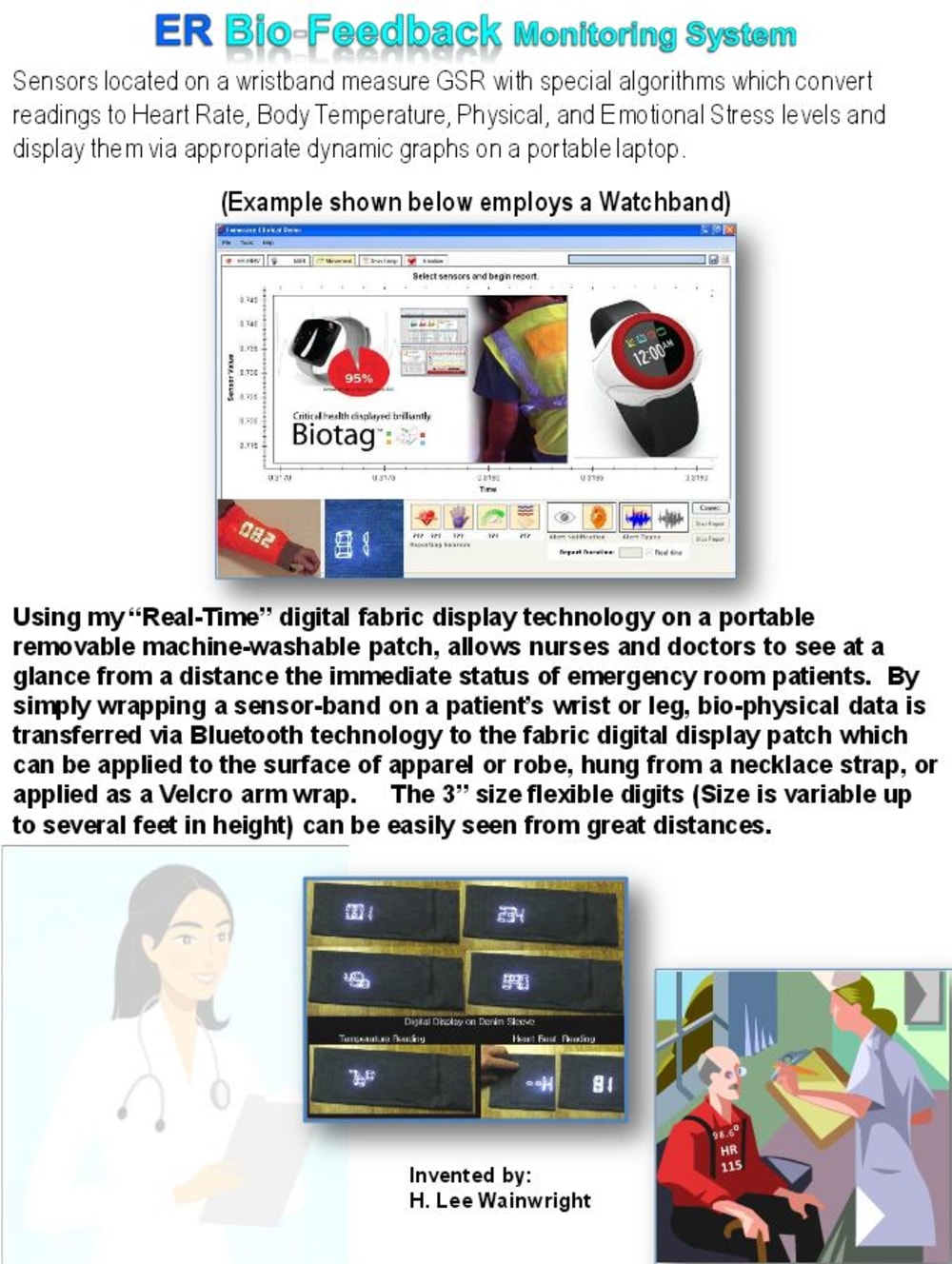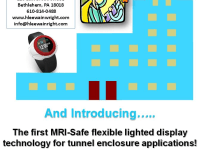A “feather-weight”, non-conductive, non-metallic (no wires or metal connections at or near the light-emitting fabric surface), flexible, machine-washable visual display that is embedded into apparel fabric materials via CNC machines.
The output display measuring from a few inches up to 16” in fabric consists of multiple transmission and receptor points using LED/Optic technology coupled with Bluetooth and/or IR encrypted communication protocols. Receiving data from a small watch or bracelet with a GSR sensor measuring resistance changes in the skin, the ECG and heart rate measurements are converted through algorithms then displayed immediately at the surface of the fabric in full-color graphic representations and/or digital formats at an intensity automatically adjusted to ambient light levels. I demonstrated a prototype at the Smart Fabric Conference in Washington D.C. to a group of academia, engineers, and technology-based observers, applied for a patent, but haven’t commercialized it.
The displays consist of PMMA durable, waterproof plastic optical fibers provided by Mitsubishi that are permanently welded into fabrics instantly via machines employing ultraviolet fixatives similarly used by dentists rebuilding teeth.
The displays have the ability to receive and transmit data via IR encrypted streams via the input and output fibers embedded in the fabric. The displays can be constructed to transmit intense IR frequencies displaying Bio-Physical conditions of the wearer sensitive to FLIR receiving equipment. Embedded in the surface area of the nylon covering of a bullet-proof vest could prove useful when a soldier was downed by using encrypted transmissions in IR to denote vital signs by reading them from afar.
An application suggested by one company was to sew two small thin bands of stainless steel thread into a baby’s pull-over to use as GSR contacts then display the baby’s heart beat in animated LED/Optic hearts over the surface of the garment. The animated pulsing hearts synched to the baby’s actual heart rate can change color according to the stress level of the baby and serve as a convenient method to alert the hearing-impaired or anyone of a potential problem.
Since there are no metal parts, the display offers the perfect solution for installing into MRI units above a child’s head where it remains invisible to the device, but quite visible to the human eye. This could be helpful in reducing stress for children by offering a more creative way of communicating information through real-time morphed voices from technicians to resemble cartoon characters above their heads.
Made in the USA, the machinery created for producing the displays is able to manufacture fabric displays measuring any size up to 12" by 16 in any type of flexible light-weight material. The machines have been used to make lighted displays for the entertainment and advertising industries, but so far no display has been manufactured for medical purposes, other than the ones created to demonstrate the technology at conferences. I haven’t shown it to any medical-based R&D company for evaluation to date, but would love the opportunity to do so someday.
Like this entry?
-
About the Entrant
- Name:Harry Wainwright
- Type of entry:individual
- Software used for this entry:Microsoft PPT
- Patent status:pending








